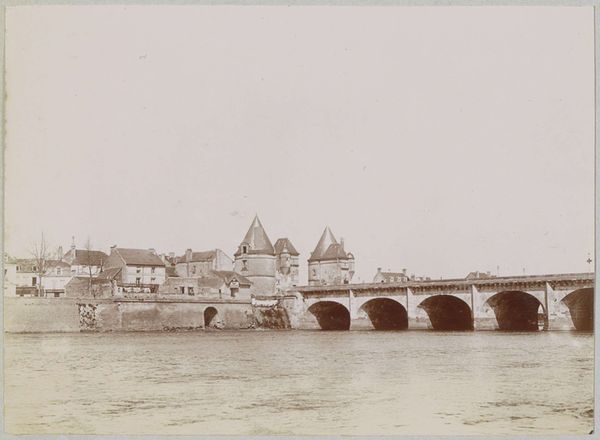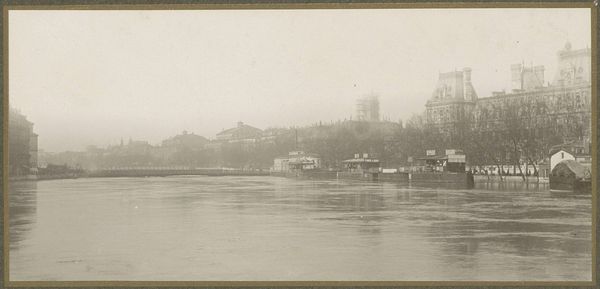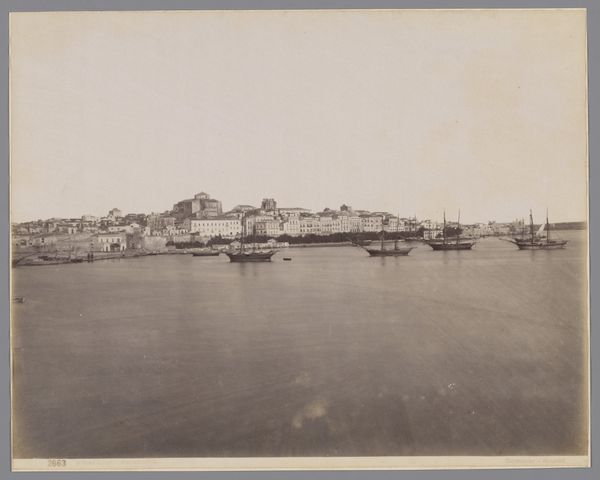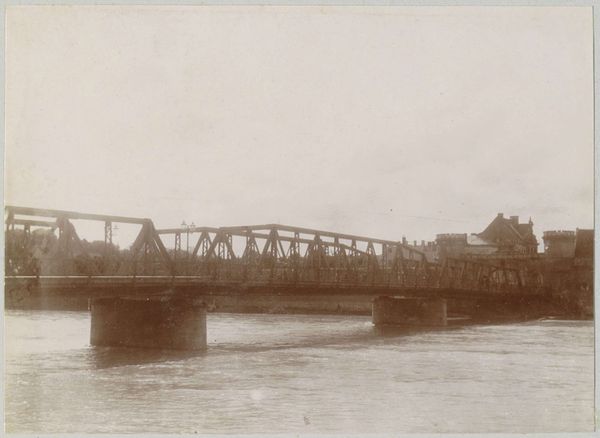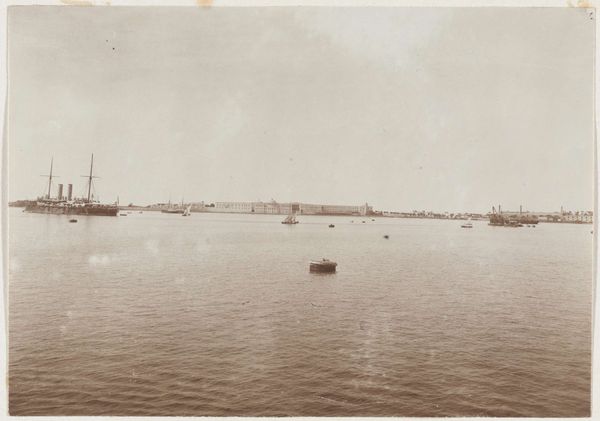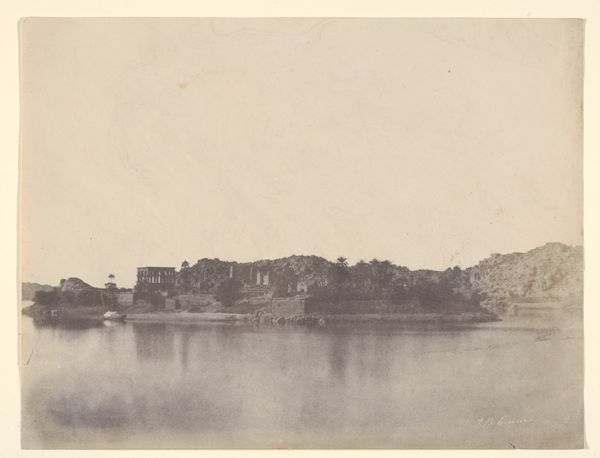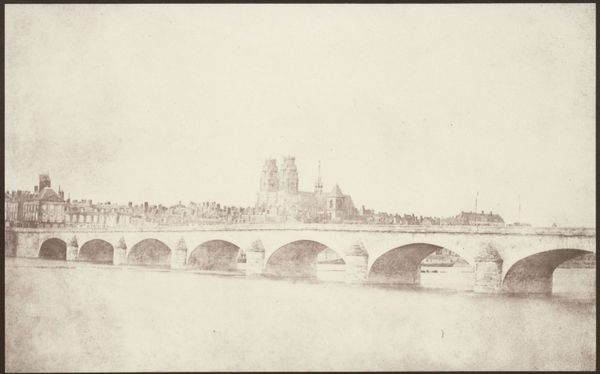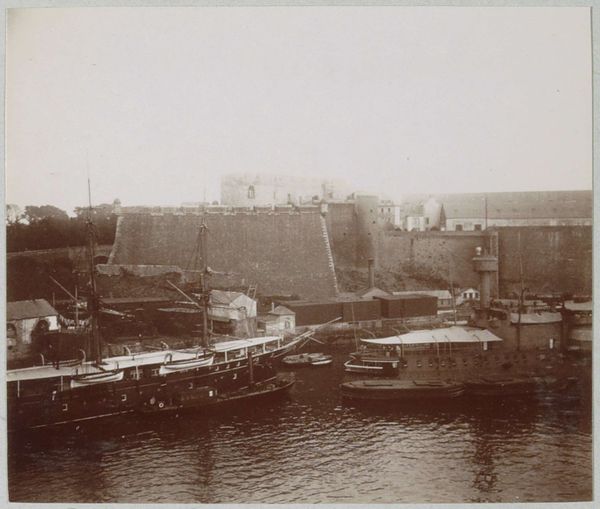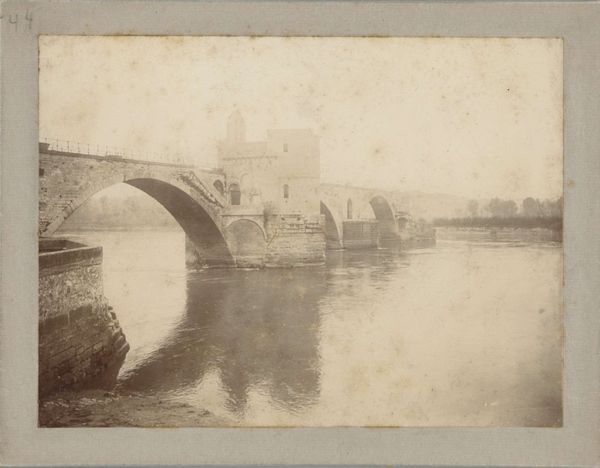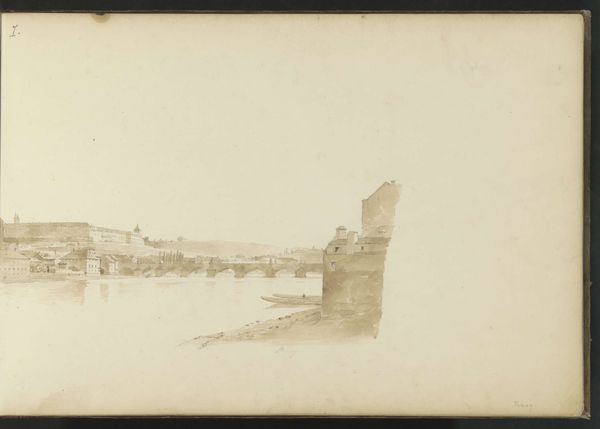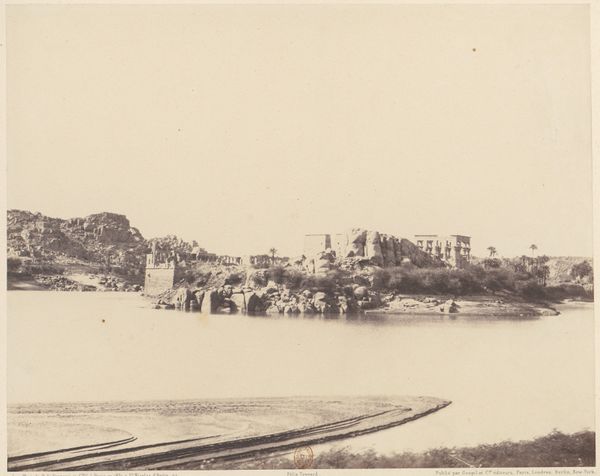
Gezicht op Pont de l'Arche met links de brug en aan de horizon de Église St-Vigor (Notre-Dame des Arts) 1897
0:00
0:00
delizy
Rijksmuseum
Dimensions: height 80 mm, width 109 mm
Copyright: Rijks Museum: Open Domain
Curator: This albumen print, created in 1897, captures "Gezicht op Pont de l'Arche met links de brug en aan de horizon de Église St-Vigor (Notre-Dame des Arts)." The photograph is now part of the Rijksmuseum collection, providing us with a fascinating view into late 19th-century France. Editor: It feels sepia-toned and a bit washed out, giving it an antique, almost dreamlike quality. The bridge leading into the cityscape creates a strong horizontal line. There's something peaceful yet melancholic in the image; the muted tones might enhance this sensation. Curator: Absolutely. Photography at the turn of the century, specifically albumen prints, offers unique insights into urban development. We see how cities like Pont de l'Arche were represented and perceived. This particular image might be trying to capture the tranquility of provincial life in France. But even in seemingly placid scenes, we should be looking for socio-political meaning in its presentation, considering factors such as urbanization. Editor: I am especially struck by the composition - the division between the flowing water and the structured architecture. I wonder how the artist considered the placement of the Église St-Vigor on the horizon line in the broader framework of state and religion? I am also considering the labor in those towns, who is represented and, critically, who is missing? What power structures are subtly reinforced, or even challenged? Curator: The choice of architecture and composition certainly hints at certain societal norms of that time period. Churches often represented power and societal structure, highlighting how religious institutions play into the day-to-day happenings of community life. However, remember, context shapes perceptions and art often presents complex or contrasting messages. This might be, in itself, a very modern, secular statement. Editor: It makes you question whose gaze is reflected in the representation and whether there were social elements affecting access or representation at play. I appreciate you flagging the composition in order to understand how structures influence power. Curator: And understanding these societal nuances enriches how we analyze this particular work and also see how that understanding might shape a modern view. By situating it historically, its nuances have the chance to come through. Editor: Indeed. The dialogue between art and social responsibility opens up deeper avenues of thought about the role that historical photographs continue to play for future audiences.
Comments
No comments
Be the first to comment and join the conversation on the ultimate creative platform.
